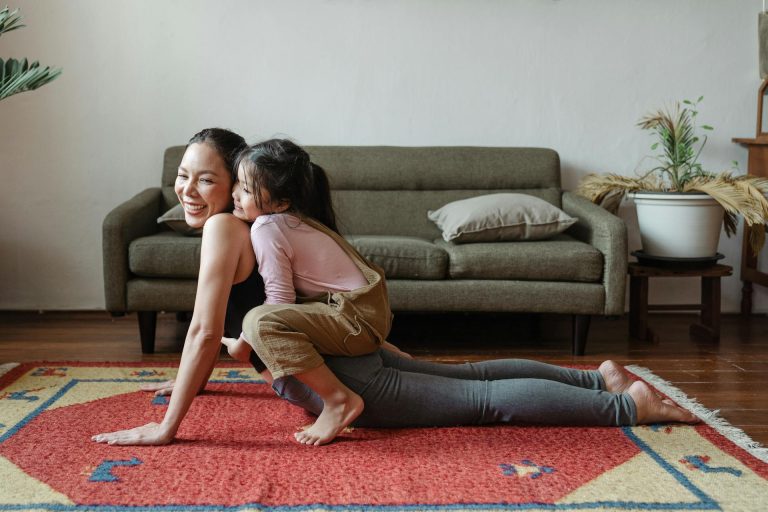Transitioning Out of Swaddle: Tips, Challenges & Solutions

Swaddling is a cherished practice for many new parents, providing babies with the warmth, comfort, and security they need in their early months.
But as your baby grows, it becomes clear that it’s time to move on.
Around 3 to 4 months, babies start reaching developmental milestones, like rolling over, which makes swaddling unsafe and unnecessary.
Transitioning out of the swaddle can be a challenge for both baby and parents, as it’s a time of adjusting sleep routines and finding new ways to comfort your little one.
However, with patience, persistence, and a bit of creativity, we found solutions that made this transition smoother. Let’s learn how you can make this change easier for both you and your baby.
Why Transitioning Out Of Swaddling Is Important
Transitioning out of the swaddle is vital for your baby’s development.
As babies grow, they gain more control, and a tight swaddle can restrict movement and pose safety risks, especially when they start to roll over.
At around 3 to 4 months, when many babies start reaching milestones like rolling or attempting to push up, it’s crucial to move away from swaddling.
Continuing to swaddle past this point can increase the risk of suffocation or interfere with the development of motor skills.
Additionally, this transition is a natural part of allowing your baby to study their surroundings, stretch their limbs, and develop the strength they need to achieve more milestones.
Signs Your Baby Is Ready to Transition Out of the Swaddle

As your baby grows, there are several signs to look out for that indicate it may be time to transition out of the swaddle.
1. Physical Signs
One of the most obvious signs is when your baby starts rolling over. Swaddling can restrict their movement, making it unsafe once they begin moving, as it could lead to suffocation or accidental injury.
Additionally, if your baby is actively trying to break free from the swaddle by wriggling their arms or legs out, it’s a clear sign they may no longer find the swaddle as comfortable or necessary.
2. Behavioral Signs
You may also notice behavioral changes, such as increased restlessness or more frequent nighttime waking.
While swaddling is meant to provide comfort, babies who have outgrown the swaddle may become frustrated and struggle to settle down.
If your baby is suddenly waking up more often or seems fussier at bedtime, it could indicate they’re ready for A change.
3. Developmental Milestones
Around the 3- to 4-month mark, babies begin to reach key developmental milestones, such as reaching for toys or becoming more mobile. Swaddling can interfere with these developments, as it limits their ability to move freely.
If your baby is showing interest in their surroundings and starting to explore, it may be a good time to transition them out of the swaddle to encourage further growth.
Challenges Parents Face When Transitioning Out of the Swaddle
Transitioning away from swaddling can feel overwhelming, but these challenges are normal. Here’s what many parents experience
-
Difficulty getting baby to sleep without the security of a swaddle: Babies often associate swaddling with comfort and protection, making it challenging for them to settle down without this familiar routine.
-
Babies waking up more often due to lack of comfort: Without the snugness of a swaddle, babies may experience more frequent night wakings.
-
Concerns about the baby’s safety during the transition period: Parents often worry about their baby’s safety as they transition, especially if their baby starts rolling over but isn’t quite ready to sleep unswaddled.
Remember, this transition takes time and patience. Every baby adjusts at their own pace, and you’ll both get through it together.
Solutions to Make Transitioning Out of the Swaddle Easier

Transitioning out of the swaddle can be a challenging time for both babies and parents. While swaddling provides comfort and security, as babies grow, they need more freedom to move their arms and legs.
Gradual Transition
Slow and steady approach (one arm out, or using a transitional swaddle sack). Start by freeing just one arm while keeping the other swaddled for 3-4 nights.
Once your baby feels comfortable, try both arms out or use a special transition swaddle that allows their arms to move freely. Take your time – don’t rush! Allow your baby to adjust at their own pace before moving on to the next step.
Comfort and Security Alternatives
Swaddle alternatives: wearable blankets, sleep sacks, and other cozy solutions. Try wearable blankets or sleep sacks that keep your baby warm and snug without restricting arm movement.
These come in fun designs and provide comfort while allowing for freedom of movement during sleep.
Creating a comfortable sleep environment (soft music, familiar scents). Make bedtime extra cozy with soft lullabies or white noise.
Add familiar scents, such as a blanket that smells like you, to help your baby feel safe and secure in their new sleep setup.
Parents’ Experiences and Tips on Transitioning Out
Transitioning out of the swaddle can be challenging, but many parents have found effective strategies to make the process smoother for both them and their babies.
-
Take it slow and be patient: Many parents recommend starting the transition gradually, like leaving one arm out at a time. This helps the baby adjust at their own pace without feeling overwhelmed by the sudden change.
-
Use swaddle alternatives: Some parents found success with sleep sacks or wearable blankets. These provide the comfort of a swaddle while allowing more freedom of movement, making the transition smoother.
-
Expect some rough nights: It’s common for babies to experience more night wakings or difficulty falling asleep during the transition. Parents emphasize the importance of staying consistent, as babies will eventually adapt to the new routine.
-
Be prepared for a little extra sleep training: Some parents recommend adding a bit of sleep training during this time to help babies settle down without the swaddle. Techniques such as gentle patting or shushing can provide reassurance as children learn to sleep independently.
-
Please don’t rush the process: The transition can take time, and it’s important not to rush it. Many parents stress that every baby is different, and pushing too hard or too fast can make the process more difficult.
Conclusion
Transitioning out of the swaddle is a significant step in your baby’s development, and it’s essential to approach it with patience and care.
A smooth transition not only ensures your baby’s safety but also supports their growing independence and mobility.
While it can be challenging, remember that every baby is different, trust your instincts, and don’t rush the process. Allow your little one time to adjust at their own pace.
If you’re facing difficulties, don’t hesitate to seek advice or try new techniques.
We’d love to hear about your experiences! Please share your own transition stories or tips in the comments below, and let’s support each other through this exciting milestone.






